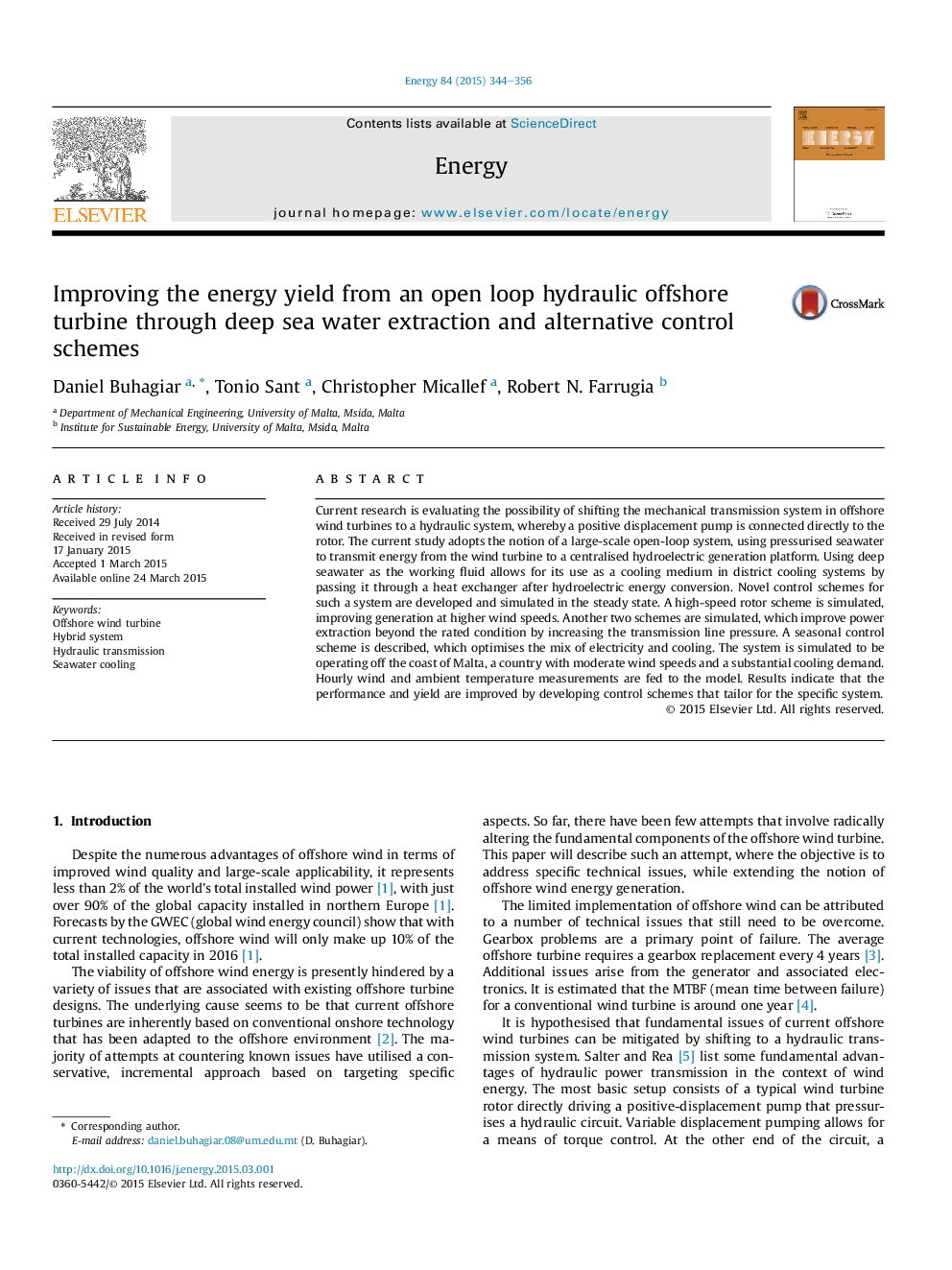| Article ID | Journal | Published Year | Pages | File Type |
|---|---|---|---|---|
| 1732314 | Energy | 2015 | 13 Pages |
Abstract
Current research is evaluating the possibility of shifting the mechanical transmission system in offshore wind turbines to a hydraulic system, whereby a positive displacement pump is connected directly to the rotor. The current study adopts the notion of a large-scale open-loop system, using pressurised seawater to transmit energy from the wind turbine to a centralised hydroelectric generation platform. Using deep seawater as the working fluid allows for its use as a cooling medium in district cooling systems by passing it through a heat exchanger after hydroelectric energy conversion. Novel control schemes for such a system are developed and simulated in the steady state. A high-speed rotor scheme is simulated, improving generation at higher wind speeds. Another two schemes are simulated, which improve power extraction beyond the rated condition by increasing the transmission line pressure. A seasonal control scheme is described, which optimises the mix of electricity and cooling. The system is simulated to be operating off the coast of Malta, a country with moderate wind speeds and a substantial cooling demand. Hourly wind and ambient temperature measurements are fed to the model. Results indicate that the performance and yield are improved by developing control schemes that tailor for the specific system.
Related Topics
Physical Sciences and Engineering
Energy
Energy (General)
Authors
Daniel Buhagiar, Tonio Sant, Christopher Micallef, Robert N. Farrugia,
